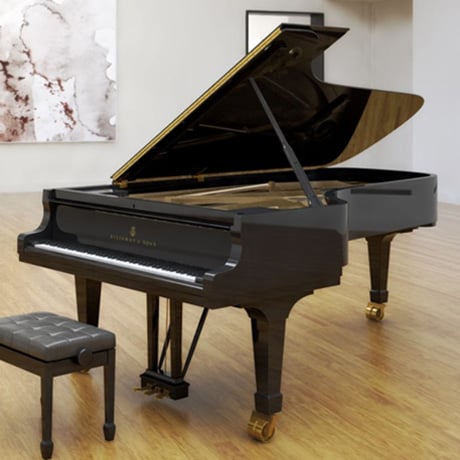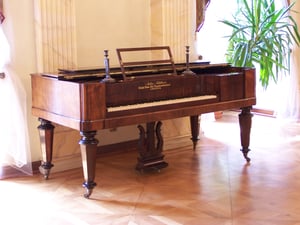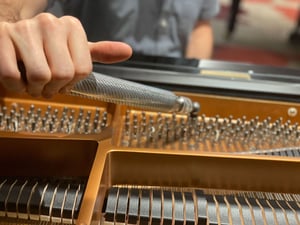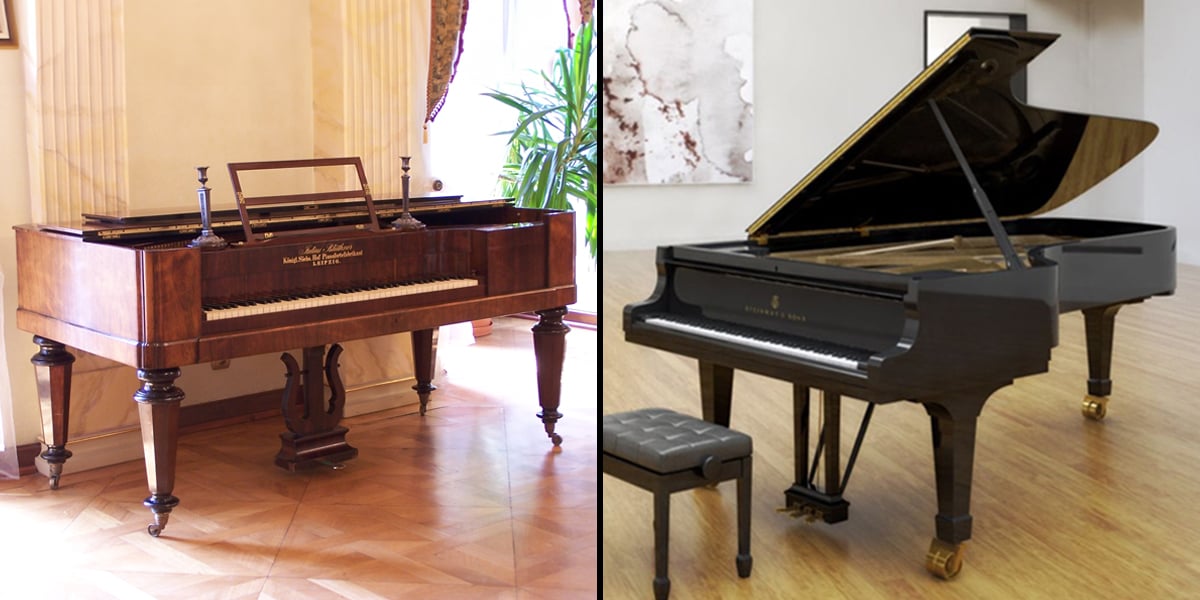Square Grands vs. Modern Grands: Understanding the Key Differences
November 17, 2023 •Steve Hauk
Introduction
A major development happened in the early 20th century that forever changed the evolution of the piano: the square cabinet was abandoned in favor of a bent rim design. Both the square grand and modern piano have their unique characteristics and historical significance, but over time, modern grands have become the industry standard. In this article, we will explore the key differences between square grands and modern grands and explain why square grands are no longer manufactured, and have very little musical value.
Key Differences
Sound Quality
One of the most critical distinctions between square grands and modern grands is sound quality. Square grands were designed during a time when piano technology was in its infancy. They have smaller soundboards and shorter strings, which limit their ability to produce the rich and resonant tones modern grands are known for. Square grands often lack the dynamic range and tonal depth that musicians require for expressive performances. Modern grands have evolved significantly in terms of sound quality. Musicians favor modern grands for their ability to project sound with clarity, precision, and a broad dynamic range. In addition to their larger soundboards and longer strings, they feature many structural improvements, resulting in a much more refined and versatile tonal palette.

The modern design became official in 1859 when Steinway & Sons received a patent for over-stringing, which enabled them to fit longer strings into a smaller cabinet while simultaneously improving the instrument’s sound through improved bridge placement and pin alignment. Steinway continued to innovate at a rapid pace throughout the late 20th and early 21st centuries, winning numerous awards for their designs. Today the company is credited by most piano historians as having invented the modern piano. Their bent-rim design and over-stringing are now considered the industry standard.
Design and Shape
Square grands, which were prevalent in the 18th and 19th centuries, have a rectangular or square-shaped body. They lack the graceful curves and sleek lines that define modern grands. The square design made pianos bulkier and less visually appealing. Modern grands, on the other hand, have a distinctive, graceful curve, with a convex shape that not only enhances their beauty but also contributes to their superior sound quality. This design innovation has made modern grands a more sought-after choice for those who value both visual appeal and acoustic performance.
curve, with a convex shape that not only enhances their beauty but also contributes to their superior sound quality. This design innovation has made modern grands a more sought-after choice for those who value both visual appeal and acoustic performance.
Size and Transportability
Square grands tend to be larger and heavier than modern grands. This bulkiness makes them very difficult to move; and their shape and size can be an impediment when it comes to fitting them into modern living spaces, which are often smaller and more compact.
Why Square Grands Have Diminished Value
Historical Significance vs. Practicality
While square grands have historical significance as early iterations of the piano, their impracticality in terms of sound quality and design - along with their archaic appearance - makes them less valuable. Today’s musicians and piano enthusiasts are more likely to invest in instruments that offer all the musical and aesthetic benefits of the modern era. If you own a square grand that you are trying to get rid of, your best bet is likely to be a historic home or an antique collector or a non-player who values the piano’s vintage charm!
collector or a non-player who values the piano’s vintage charm!
Limited Musical Potential
Square grands, due to their inferior sound quality and limited tonal range, are less appealing to serious musicians and composers. Their limitations hinder the expressive capabilities that modern grands offer, making them less valuable for those who aim to create exceptional music.
Maintenance and Restoration Costs
Restoring a square grand piano can be a costly endeavor. Finding replacement parts and skilled craftsmen who specialize in restoring these vintage instruments can be challenging and expensive. Modern grands, being more widely available and with standardized components, are easier and more cost-effective to maintain and repair.
Conclusion
In the world of pianos, square grands and modern grands each hold their place in history. While square grands have their own historical charm and significance, they are no longer the preferred choice for musicians, or even collectors. The key differences in design, sound quality, and practicality have made modern, bent-rim grands the superior choice in today's musical landscape. Their refined construction and exceptional sound quality make modern grands not only valuable for musical performances but also a treasured piece of art for any piano enthusiast.
Related Posts:
Featured Articles
Categories
- Beginner Pianos (23)
- Boston Pianos (15)
- Comparisons (30)
- Designer and Specialty Pianos (8)
- Essex Pianos (10)
- Events (11)
- Featured (24)
- Institutional (3)
- Joy of Piano (15)
- Learning About Pianos (69)
- News (35)
- Pricing and Cost (19)
- Resource Center (122)
- Roland Pianos (6)
- Spirio (15)
- Steinway Pianos (70)
- Student (14)
- Teacher (13)
- Used Pianos (20)
- Videos (19)


